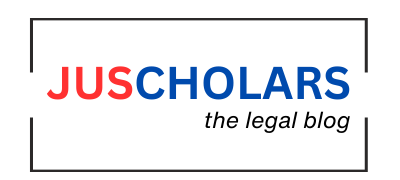Introduction
The expansion of state surveillance throughout India using new technologies in the guise of face recognition systems (FRS) and drones is ramping up constitutional foundational issues. As efficient and secure as these emerging technologies may be, they have the capacity to annihilate informational privacy, bodily integrity, and freedom of locomotion. Without an effective legal system, India’s expanding surveillance regime can make fundamental rights under the Constitution a relic, our forefathers toiled hard and hard for the rights which most people have taken for granted and turning a blind eye to these privacy destroying measures would be an insult to them and our nation as a whole,
Core Legal Framework
Constitutional Provisions
Article 21: While it contains the Right To Life clause it is also Praised for covering the right to privacy, particularly after the historic right to privacy judgment in K.S. Puttaswamy v. Union of India (2017).The concept of privacy destroying monitoring machine is unconstitutional to its core
Article 19(1)(a) and 19(1)(d): Guarantees freedom of speech and mobility, indirectly chilled through mass surveillance, a grave violation to india as a whole
Article 14: Promotes equality and reasonableness of state action—a notion undermined by unregulated facial recognition technology.
Statutory Framework (or lack of it)
India lacks a unified uniform data protection act. The just proposed Digital Personal Data Protection Act, 2023, although on the right track, yet keeps government agencies on general reasons of national interest.
Information Technology Act, 2000:
Section 69: Permits State surveillance and interception without due process protection or judicial review.
Indian Telegraph Act, 1885 and Indian Wireless Telegraphy Act, 1933: Ancient legislations used to facilitate electronic surveillance today with poor privacy safeguards.
Case Law and Jurisprudence
K.S. Puttaswamy v. Union of India (2017) 10 SCC 1
The Supreme Court has held the right to privacy as a fundamental right.
Specific emphasis is laid on the triple test: legality, necessity, and proportionality, to every invasion of privacy.
evinced intense concern regarding mass surveillance initiatives such as Aadhaar and other such initiatives not legislatively sanctioned.
Justice K.S. Puttaswamy v. Union of India (Aadhaar Case), (2019) 1 SCC 1
Majority upheld Aadhaar but reaffirmed that surveillance in the absence of legislative sanction is not constitutional.
Anuradha Bhasin v. Union of India (2020) 3 SCC 637
SC established proportionality and procedural protection to internet shutdowns—applicable in order to scrutinize digital surveillance plans.
Internet Freedom Foundation v. Union of India (Ongoing Litigation)
IFF has resisted the deployment of Facial Recognition Systems (FRS) without legislative basis or data protection measures.
Modern Context and Instances
Facial Recognition Technology (FRT)
National Automated Facial Recognition System (AFRS):
NCRB mooted; efforts to monopolize FRT for policing and identification.
No legislative basis or independent audit—despite Puttaswamy’s requirement.
Deployment of FRT by Delhi Police in Protests
Used to identify protesters against CAA, with a paltry <2% efficacy in women and 60% overall—failure and bias.
Drone Surveillance
Used to swarm police, monitor religious gatherings, and amidst COVID-19 lockdowns.
Drone Rules, 2021:
Confer blanket state surveillance powers in a rash regime.Something which has been exploited whenever the situation came
Allow critics highlight having no data storage and deletion regulations, facial recognition caps, or independent audit powers.
Chilling Effects and Marginalized Groups
Targeting disproportionately minority groups, activists, and protesters—indulging in constitutional imbalance.
Chilling of dissent, political engagement, and freedom of expression by the climate of fear via surveillance paranoia.
Critical Analysis
Parliamentary Oversee Deficit
India’s current structure is executive-dominated and avoids parliamentarian debate or democratic oversight.This can be compare to a constitutional crisis i,e a period where the executive starts ignoring the judiciary s orders.
In contrast to jurisdictions like the UK’s Investigatory Powers Act, 2016, India lacks a statutory framework that audits and oversees surveillance.
Opacity and Lack of Judicial Overhaul
No transparency reports publicly released or surveillance warrants.
Pre-authority of judiciary. Breach of accepted rule of law and norms of due process.
Risk of Mission Creep
Technologies employed for public protection. (e.g., pandemic control) are being utilized for extended public surveillance.
FRT and drones can be reoriented as digital authoritarianism instruments outside statutory parameters.
Conditions for Democratic Regulatory Safeguards
India needs to pass a Surveillance Regulation Law with:
- Judicial warrant for observation.
- Independent Data Protection Authority. Regulatory Agency.
- Sunset provisions and periodic auditing.
- Right to notification of observation.
Conclusion
Unregulated expansion of face recognition and spy drones is a grave threat to India’s democratic culture. Without proper legal framework, tools for transparency, and judicial oversight, these technologies can dismember faith, marginalize further, and mute constitutional rights. Judicial acknowledgment of privacy as a constitutional right is hollow unless backed by substantive legislative protection, meaningful regulation, and public accountability. Reformation needs to occur—not only for privacy’s but for India’s deliverance of the constitutional conscience.
Footnotes and References
K.S. Puttaswamy v. Union of India, (2017) 10 SCC 1.
Justice K.S. Puttaswamy v. Union of India (Aadhaar Case), (2019) 1 SCC 1.
Anuradha Bhasin v. Union of India, (2020) 3 SCC 637.
Internet Freedom Foundation, “Project Panoptic: Facial Recognition Use in India”, 2023.
Drone Rules, 2021, Ministry of Civil Aviation.
“Facial Recognition and Policing in India,” The Wire, 2022.
Centre for Internet and Society, “Surveillance Law in India: A Critical Review,” 2021.
Digital Personal Data Protection Act, 2023.
National Strategy on Artificial Intelligence, NITI Aayog (2018).
Author Name: Shourya Singh, BA LL.B. (Hons.), 1st Year, NLU Jodhpur






